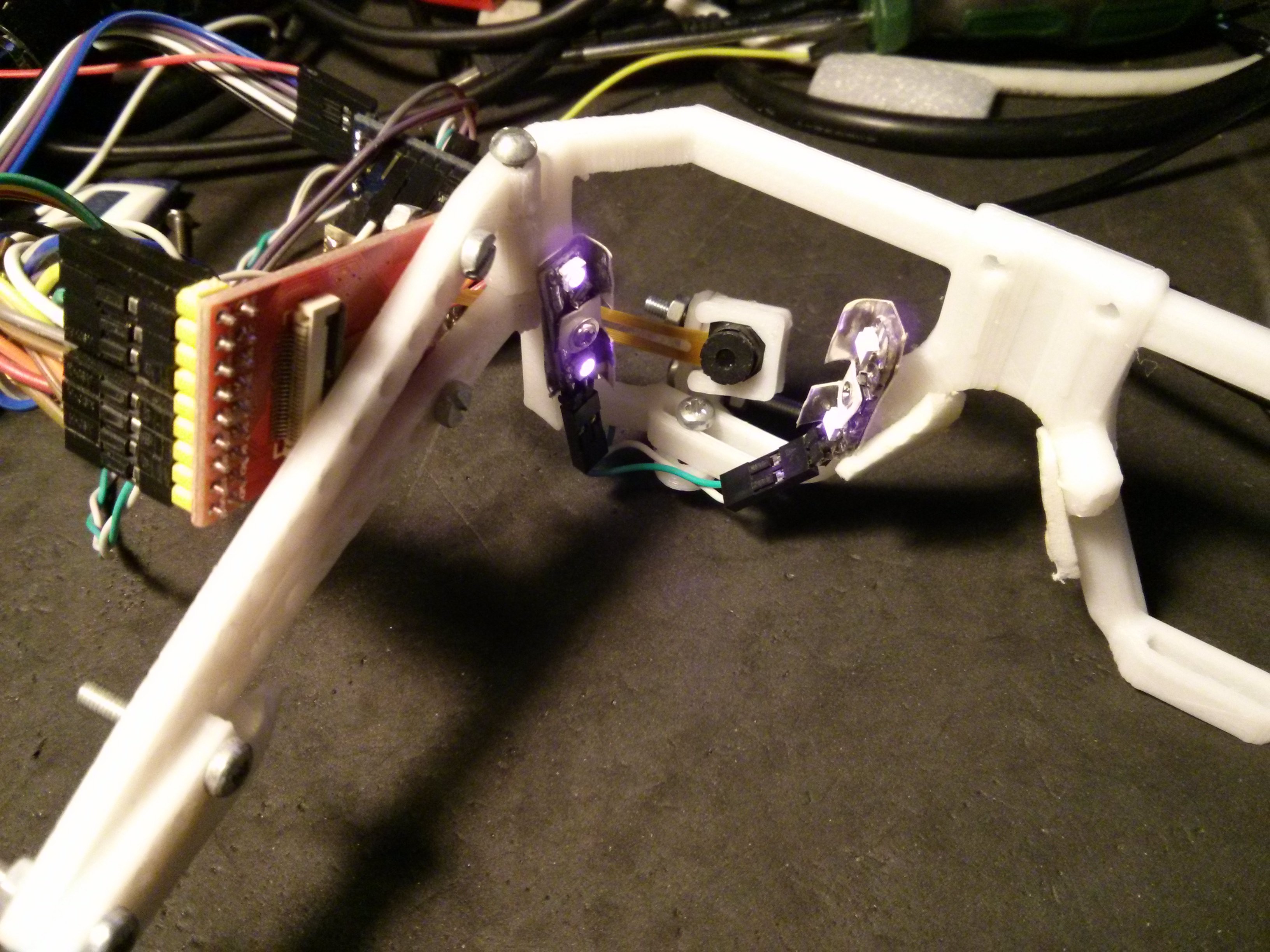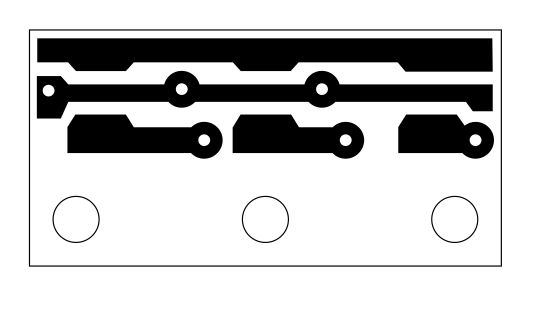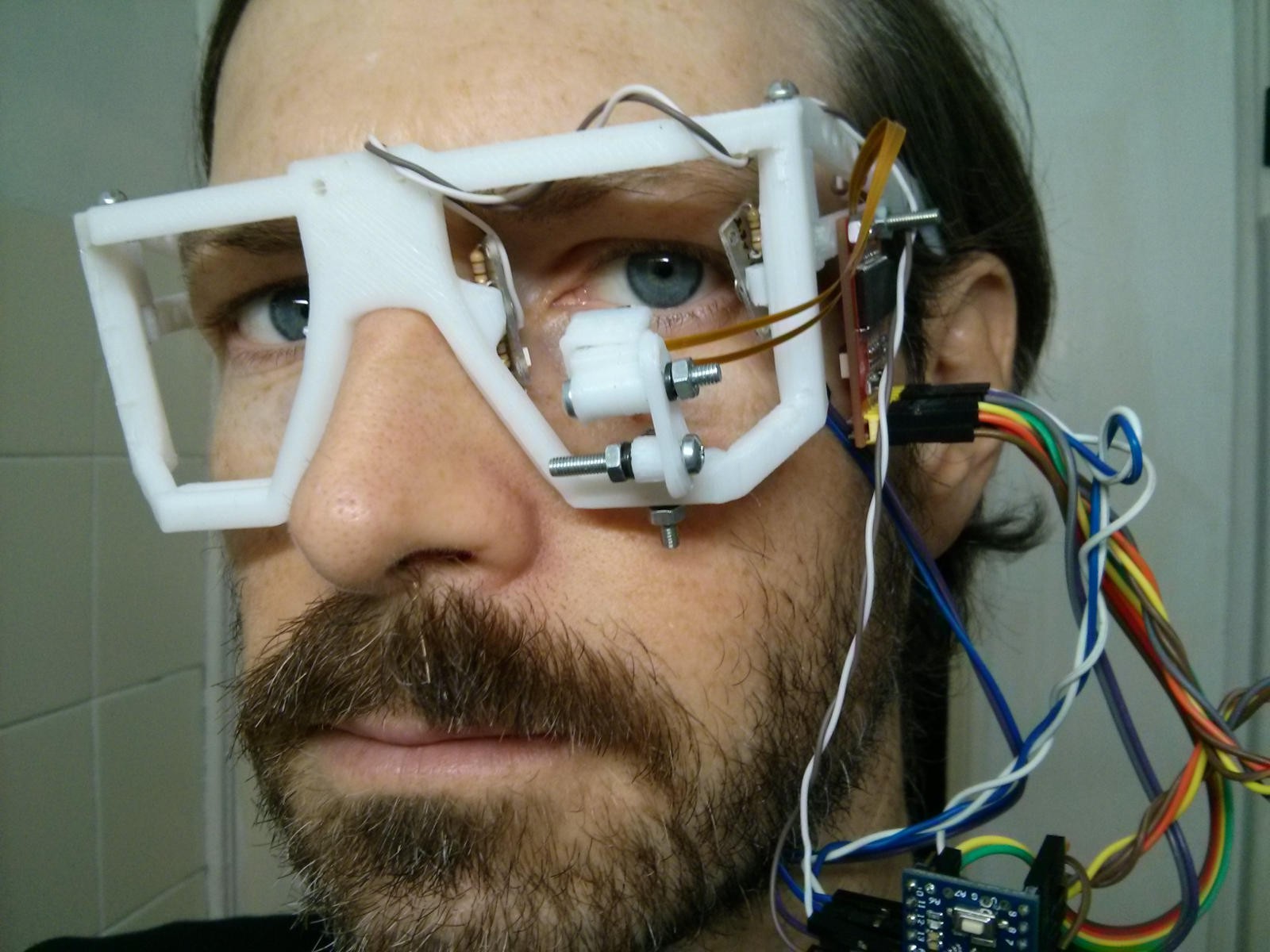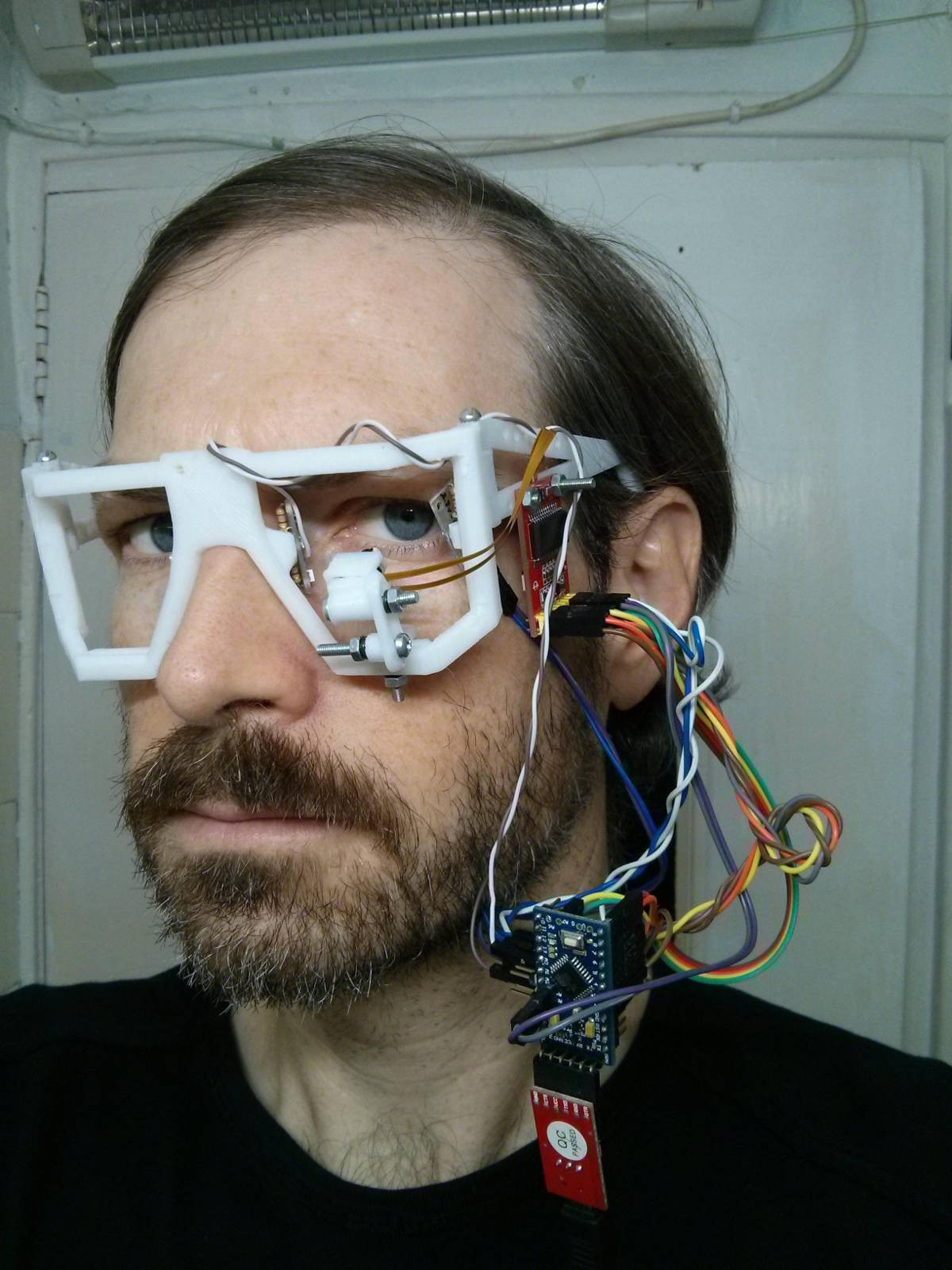-
First complete prototype test
03/17/2018 at 12:43 • 0 commentsAfter a long time parked, I took this project again and put the things together to do a first test moving the servos with the tracking data.
The IR illumination system has a lot to improve, but so far the tracking is working fine.
-
Eye tracking sucess!
10/24/2016 at 22:59 • 0 commentsAfter playing with the sensor settings and illumination finally there are some decent results of the eye pupil tracking. IIt might be still not enough for a good movement of the animatronic eyes but at least gives some hope about what the little arduino Pro Mini can achieve!
![]()
-
Tuning the IR illumination
08/17/2016 at 21:59 • 0 commentsThe first capture tests are not very impressive... with enough IR filter sheets (made from photo film) to block the ambient light the sensibility is really poor using two boards with two SMD5050 IR leds each on a custom board:
Ill try to add more ID LEDs and increase the current to see what happens, two boards (with three leds), one on at each side of the eye:![]()
The elements so far are: ov7720 sensor (more sensitive than the popular ov7670) with the negative film IR filters, AL422B fifo module, arduino pro mini 3.3v, USB-serial board (to program and debug) and the IR led boards:![]()
![]()
-
Assembling the first prototype
08/17/2016 at 21:33 • 0 commentsAfter making some changes in the 3D design of the glasses/holder of all the gadgets of the first prototype I finally 3D printed it and put together all the things.
This is how it looks like (just like a mad scientist XD ):
![]()
-
Some references
08/16/2016 at 19:55 • 0 commentsEye tracking
Commercial eye tracking has been around quite a while, and it is quite expensive, specially the ost-processing software tat extracts "useful" data from the tracked movements. But the open source projects are quite new, appearing mostly the last decade, with a huge increase last few years. One of the earliest and best documented is the EyeWriter . I wont start enumerating all the references I've analyzed, but if you are curious just search for "open source eye tracker". Here is also a nice eye-tracker link collection, for your reference.
One common thing among these projects is that, for their purposes, they need accuracy and speed (which is not our case) so they rely on hardware that is either not portable or too big or expensive for the goals of the Crazy Eyes project.
So far the projects that match more closely what we want are open source general purpose programmable computer vision modules like Ibrahim Abdelkader's OpenMV , or small linux systems like the one used in the Eye of Horus project (just to mention some references). But they are still to costly for the cheap hilarious gadget we want to play with in Halloween or some cosplay game, or even in a party!
Another remarkable computer vision experiment that really inspired me is John Orlando's AVRcam, where he interfaced a sensor with just an ATmega8 back in year 2004, 12 years ago!.
Animatronic eyes
Two years ago I got involved in a project for a big company that wanted to promote their new robot film saga with an actor performing as one of the robot characters in mall centers an other places. I was in charge for the special effects of the dress, like voice changer, moving lights while speaking, mechanical sounds for the legs and arms movements, a pari of animatronic eyes controlled by the actor with a joystic, etc.
When I fist searched about animatornic eyes, both commercial and open source, i was surprised that there were not so many options, most of them expensive and bulky, even if it was all two servos and a few simple mechanical parts. So i decided to take advantage of my brand new 3D printer and made the animatronic eyes shown in the previous log. They are available in my thingiverse.
These were ok to fit inside the robot's helmet, but for the Crazy Eyes I want something even smaller and easier to assembly, so I'll be working on a new design at the same time as testing the tracking capabilities of several microcontrollers.
-
Firts thoughts
08/16/2016 at 13:45 • 0 commentsThere are two main parts in the project: one is the eye tracking, and the other one is the animatronic eyes. Both have to match the requirements and restrictions of the project, like energy, weight, etc.
The tracking problem has a software part and a hardware part, which depends on the phisics of light (in our case IR light) and how it affects the surface of the materials being viewed by the image sensor.
The animatronics problem is all about designing a small-as-possible 3D printing friendly animatronic eyes that can be attached or customized to the user's needs.
I will start building from the two experiences that inspired this project, first my experimentation with arduino and the omnivision ov7670 sensor module, which I've published in my blog (http://therandomlab.blogspot.com.es/2016/06/arduvision-ii-ov7670-fifo-module-and.html) :
Then, regarding the eyes, I've played before with the 3D printer, designing these pair of eyes for another project:
Crazy Eyes
Automated portable animatronic eyes that point/look at the same point where you are looking
 Dasaki
Dasaki



